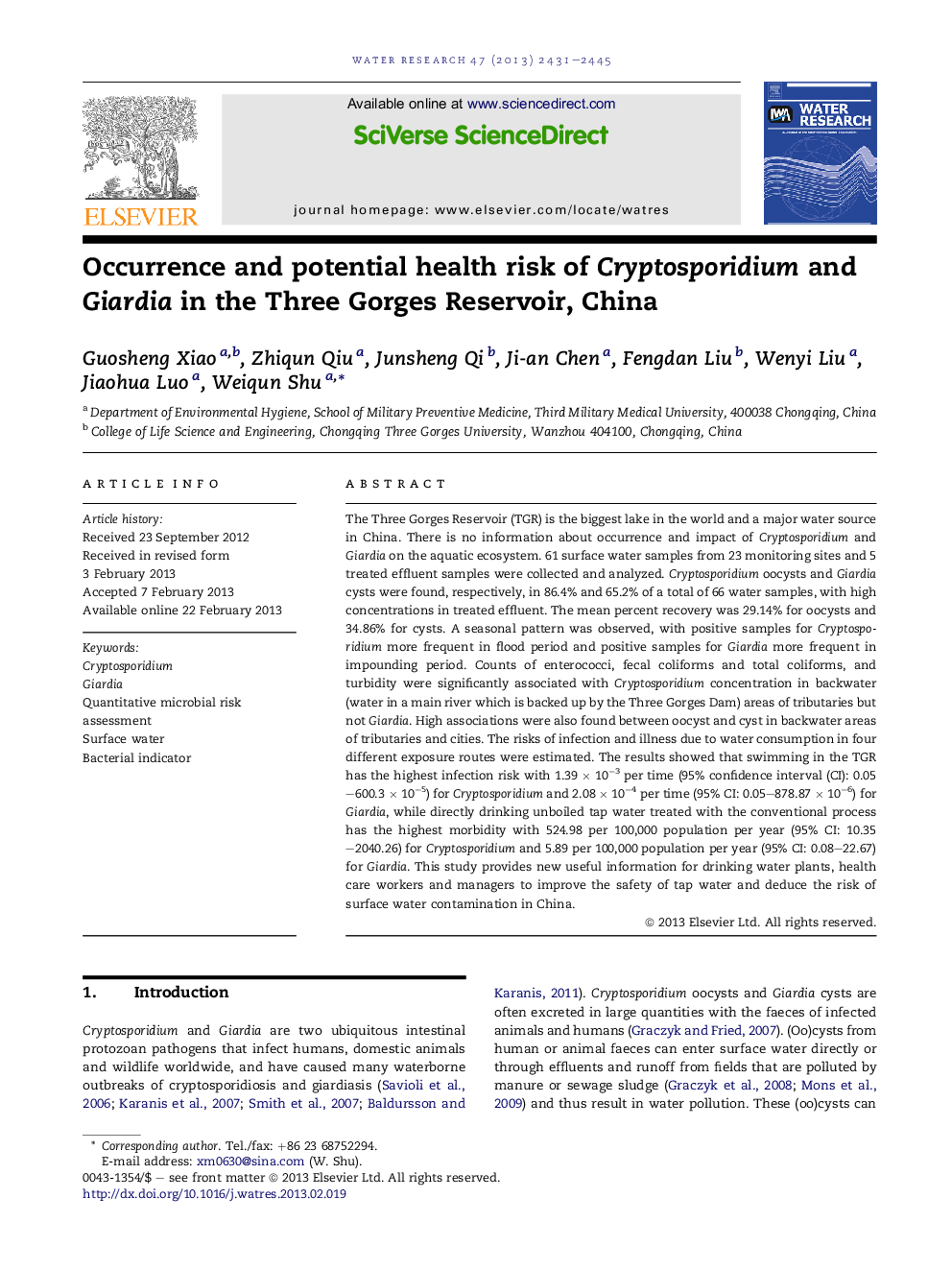| Article ID | Journal | Published Year | Pages | File Type |
|---|---|---|---|---|
| 4482294 | Water Research | 2013 | 15 Pages |
The Three Gorges Reservoir (TGR) is the biggest lake in the world and a major water source in China. There is no information about occurrence and impact of Cryptosporidium and Giardia on the aquatic ecosystem. 61 surface water samples from 23 monitoring sites and 5 treated effluent samples were collected and analyzed. Cryptosporidium oocysts and Giardia cysts were found, respectively, in 86.4% and 65.2% of a total of 66 water samples, with high concentrations in treated effluent. The mean percent recovery was 29.14% for oocysts and 34.86% for cysts. A seasonal pattern was observed, with positive samples for Cryptosporidium more frequent in flood period and positive samples for Giardia more frequent in impounding period. Counts of enterococci, fecal coliforms and total coliforms, and turbidity were significantly associated with Cryptosporidium concentration in backwater (water in a main river which is backed up by the Three Gorges Dam) areas of tributaries but not Giardia. High associations were also found between oocyst and cyst in backwater areas of tributaries and cities. The risks of infection and illness due to water consumption in four different exposure routes were estimated. The results showed that swimming in the TGR has the highest infection risk with 1.39 × 10−3 per time (95% confidence interval (CI): 0.05–600.3 × 10−5) for Cryptosporidium and 2.08 × 10−4 per time (95% CI: 0.05–878.87 × 10−6) for Giardia, while directly drinking unboiled tap water treated with the conventional process has the highest morbidity with 524.98 per 100,000 population per year (95% CI: 10.35–2040.26) for Cryptosporidium and 5.89 per 100,000 population per year (95% CI: 0.08–22.67) for Giardia. This study provides new useful information for drinking water plants, health care workers and managers to improve the safety of tap water and deduce the risk of surface water contamination in China.
Graphical abstractFigure optionsDownload full-size imageDownload high-quality image (193 K)Download as PowerPoint slideHighlights► Cryptosporidium and Giardia are widely distributed in the Three Gorges Reservoir. ► Cryptosporidium oocysts (86.4%) were more prevalent than Giardia cysts (65.2%). ► Six Cryptosporidium species and three Giardia assemblages were identified. ► Cryptosporidium in flood period and Giardia in impounding period were more frequent. ► Health risk due to water consumption in four exposure routes was estimated.
